Click here to read the article in the Great Lakes Echo
Commentary
- Editor’s note, Jim Olson is president of FLOW, a Traverse City-based non-profit legal policy and action organization whose mission is to advance public trust solutions to save the waters of the Great Lakes Basin.
By Jim Olson
The health and public use and enjoyment of the Great Lakes is under siege from systemic threats like climate change, extreme water levels, Asian Carp and other invasive species, and nutrient pollution.
One of the most pernicious dangers is the resurgent excessive phosphorous and other nutrient runoff from farming practices and lack of proper sewage treatment. Moreover, the situation is worsening because of climate change. This nutrient loading has resulted in devastating, harmful algal blooms like the “dead zone” that extended over western Lake Erie in the summer of 2011, covering an area the size of Rhode Island and Connecticut. These algal blooms turn the surface and shores of the Great Lakes into a toxic soup, closing beaches and drinking water plants, killing fish and fishing, marring private property and public beaches, and discouraging tourism.
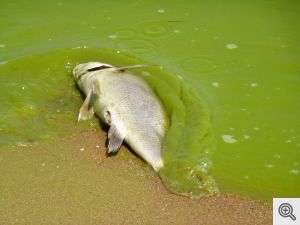 These impacts strike at the heart of the Great Lakes and the uses enjoyed and valued by the 40 million residents who live in the Basin. In 2013, Toledo had to spend $1 million to treat its drinking water from toxic globs of algae. Unchecked, this chronic, worsening problem will strike a blow to the economy and quality of life in the Great Lakes region.
These impacts strike at the heart of the Great Lakes and the uses enjoyed and valued by the 40 million residents who live in the Basin. In 2013, Toledo had to spend $1 million to treat its drinking water from toxic globs of algae. Unchecked, this chronic, worsening problem will strike a blow to the economy and quality of life in the Great Lakes region.
Binational report urges action
Fortunately – with a sense of urgency – the International Joint Commission (“IJC”), the bi-national United States and Canadian governing board charged with protecting the Great Lakes, issued its Report of the Lake Erie Ecosystem Priority(February 2014) – A Balanced Diet for Lake Erie: Reducing Phosphorus Loadings and Harmful Algal Blooms.The report calls on Michigan, Ohio, New York, and Pennsylvania, and the province of Ontario to take immediate steps to stop this devastating toxic nuisance before conditions worsen, not only in Lake Erie but also in Lake Huron and on the shores of Lake Michigan as far north as the pristine Door Peninsula and Sleeping Bear Dunes National Lakeshore.
Unfortunately, efforts to date have not reduced phosphorus or curtailed this massive problem, which is too large, too harmful, and too costly to the lakes, their ecosystem, and the 40 million people who live in the Great Lakes region to let this languish a year longer.
While the challenge is daunting, the IJC has taken the helm and focused its scientific studies and strong policies on the responsibility of the states, province, and others whose practices are causing the harm to Lake Erie and parts of the other Great Lakes. The IJC has recommended at a minimum a cut in phosphorus loading from farming and sewage overflows and other runoff by nearly 50 percent. Possible actions include the setting of a total phosphorus limit in Lake Erie and adoption of best practices for the management and use of fertilizers on farms and lawns.
Not only has the IJC set the target at nearly 50 percent and fingered the actions that need to be taken through voluntary cooperation, it has established a fresh legal and policy framework – or blueprint – for sharing responsibility, taking action, and, if necessary, implementing enforcement. The IJC has invoked a fundamental principle embedded in custom and law of the states and province on the Great Lakes – the duties imposed under “public trust” law in navigable waters and their tributary watersheds. In its report, the IJC recognized and urged states and Ontario to apply public trust principles as an overarching measure to address and solve the systemic threat of phosphorus and algal blooms in Lake Erie.
A framework for the public trust
The governments of Canada, the United States, Ontario and the states that share a common boundary on Lake Erie could apply a public trust framework, a set of important common law principles shared by the states, provinces, and both countries. Under these principles the governments should hold Lake Erie as a public trust for their citizens. The public trust framework would provide the governments with an affirmative obligation to assure that the rights of the public with respect to navigation, fishing, swimming, and the water and ecosystem on which these uses depend are protected and not significantly impaired.
In 1892, the United States Supreme Court established a principle that the Great Lakes and their protected public trust uses for boating, swimming, fishing, and other recreation can never be interfered with or significantly impaired now or in the future. A framework with a benchmark is necessary for the immediate reduction of phosphorus in Lake Erie and the other Great Lakes. The framework for cooperation and enforcement to achieve this benchmark is the public trust – a refreshing, straightforward contrast to the layers of rules and regulations that have been unable to stop the spread of devastating toxic algal blooms.
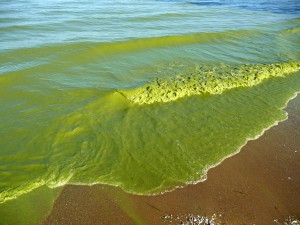 Algal blooms and toxic algae “dead zones” can be prevented and Lake Erie restored by reducing phosphorous loading from farming, sewage overflows, and fugitive residential and commercial fertilizing. If we continue to engage in dialogue but chose not to implement measures or options that will reduce phosphorous and restore Lake Erie, more beaches will close, commercial fishing will dry up, and tourism, riparian property values, public use of the lakes for recreation and enjoyment will continue to sink. The public trust provides a fresh approach based on traditional, time-tested principles that will provide the framework from which the states, stakeholders, and all citizens, who are the legal beneficiaries of this trust, can work together with shared responsibility to save this magnificent shared commons.
Algal blooms and toxic algae “dead zones” can be prevented and Lake Erie restored by reducing phosphorous loading from farming, sewage overflows, and fugitive residential and commercial fertilizing. If we continue to engage in dialogue but chose not to implement measures or options that will reduce phosphorous and restore Lake Erie, more beaches will close, commercial fishing will dry up, and tourism, riparian property values, public use of the lakes for recreation and enjoyment will continue to sink. The public trust provides a fresh approach based on traditional, time-tested principles that will provide the framework from which the states, stakeholders, and all citizens, who are the legal beneficiaries of this trust, can work together with shared responsibility to save this magnificent shared commons.
The IJC should be commended for this bold and positive step and for its leadership in urging the states and Ontario to implement the public trust principles that apply to all of the states and Ontario and their citizens. These principles move this bi-national issue to a higher level centered on our core values – water protection and restoration, quality of life, and a sustainable economy – that honor the public trust that, in the long run, will protect the waters and uses on which we, our children, and grandchildren depend.
As a citizen beneficiary of the public trust in our Great Lakes, read the report, send the IJC a letter or email thanking the commissioners for taking the action they did in issuing it. Send an email, a letter, and make a phone call to the leader of your state or province, urging application of this public trust framework and these principles. If we follow the benchmark through public trust principles, we will establish a framework for these common waters and interdependent economy and quality of life for this and future centuries.
All hands on deck – for implementing the public trust for water!
- Reach Jim Olson at FLOW, 153 ½ E. Front Street, Traverse City, MI 49684. Phone: 231.944.1568. Additional background on the author and FLOW. On May 13 FLOW is hosting a webinar on nutrient pollution and algal blooms. Space is limited; registration required.


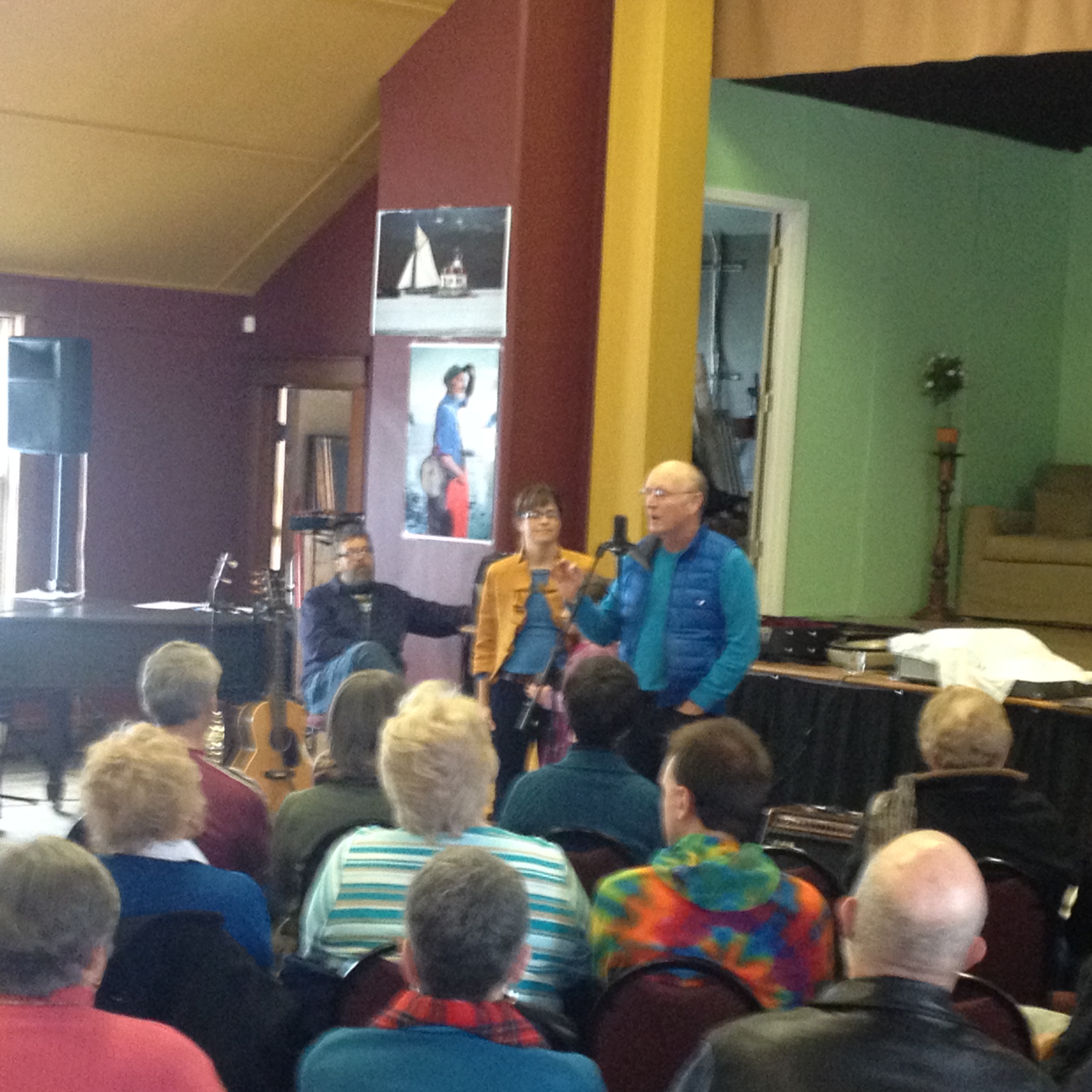

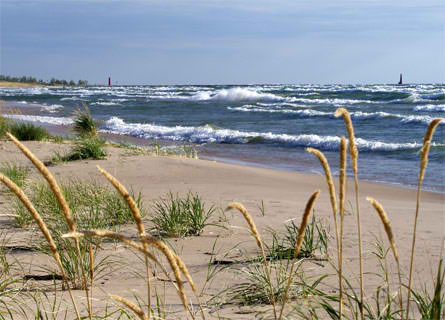
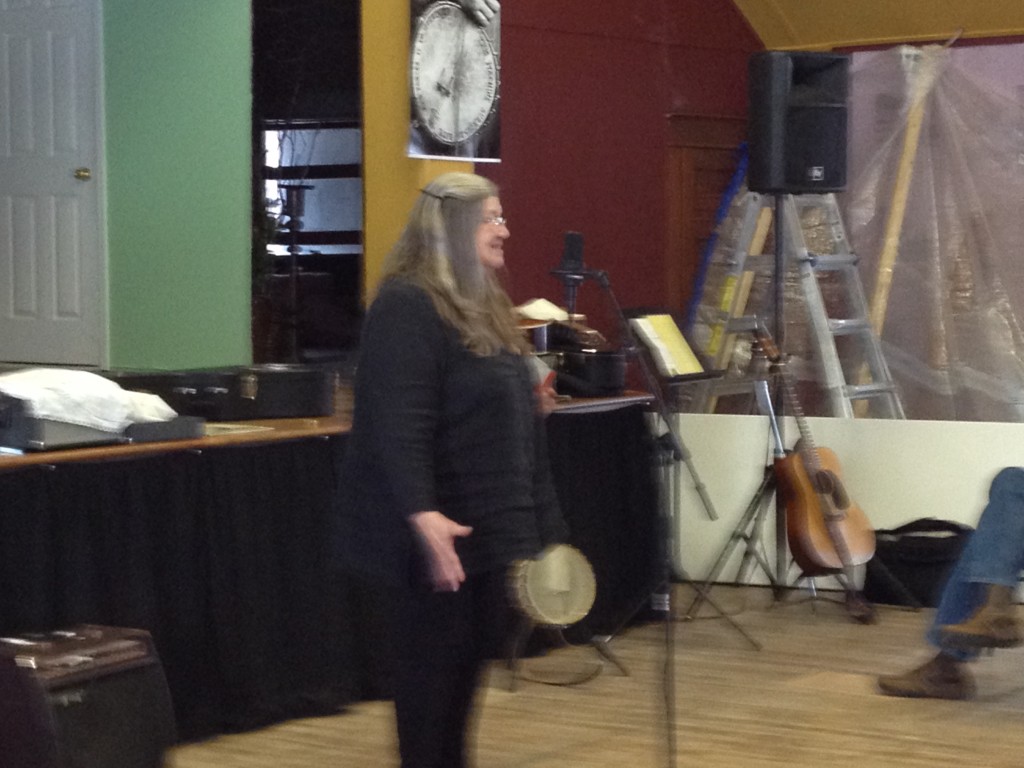












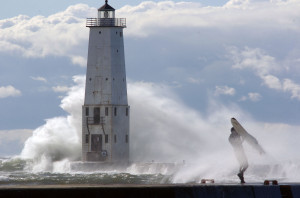
 These impacts strike at the heart of the Great Lakes and the uses enjoyed and valued by the 40 million residents who live in the Basin. In 2013, Toledo had to spend $1 million to treat its drinking water from toxic globs of algae. Unchecked, this chronic, worsening problem will strike a blow to the economy and quality of life in the Great Lakes region.
These impacts strike at the heart of the Great Lakes and the uses enjoyed and valued by the 40 million residents who live in the Basin. In 2013, Toledo had to spend $1 million to treat its drinking water from toxic globs of algae. Unchecked, this chronic, worsening problem will strike a blow to the economy and quality of life in the Great Lakes region. Algal blooms and toxic algae “dead zones” can be prevented and Lake Erie restored by reducing phosphorous loading from farming, sewage overflows, and fugitive residential and commercial fertilizing. If we continue to engage in dialogue but chose not to implement measures or options that will reduce phosphorous and restore Lake Erie, more beaches will close, commercial fishing will dry up, and tourism, riparian property values, public use of the lakes for recreation and enjoyment will continue to sink. The public trust provides a fresh approach based on traditional, time-tested principles that will provide the framework from which the states, stakeholders, and all citizens, who are the legal beneficiaries of this trust, can work together with shared responsibility to save this magnificent shared commons.
Algal blooms and toxic algae “dead zones” can be prevented and Lake Erie restored by reducing phosphorous loading from farming, sewage overflows, and fugitive residential and commercial fertilizing. If we continue to engage in dialogue but chose not to implement measures or options that will reduce phosphorous and restore Lake Erie, more beaches will close, commercial fishing will dry up, and tourism, riparian property values, public use of the lakes for recreation and enjoyment will continue to sink. The public trust provides a fresh approach based on traditional, time-tested principles that will provide the framework from which the states, stakeholders, and all citizens, who are the legal beneficiaries of this trust, can work together with shared responsibility to save this magnificent shared commons.
 The joint commission recommends an immediate cut of nearly 50 percent in phosphorus loading from excessive use of farm fertilizers and municipal sewage overflows, through modifications of current practices. It calls for a fresh legal and policy framework for sharing responsibility and achieving the necessary reduction in phosphorus to restore Lake Erie and renew its beaches, fishing, and other natural advantages.
The joint commission recommends an immediate cut of nearly 50 percent in phosphorus loading from excessive use of farm fertilizers and municipal sewage overflows, through modifications of current practices. It calls for a fresh legal and policy framework for sharing responsibility and achieving the necessary reduction in phosphorus to restore Lake Erie and renew its beaches, fishing, and other natural advantages.



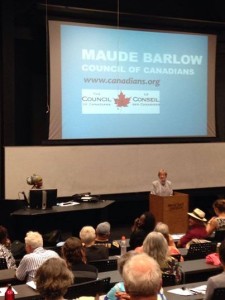
 I will be a senior at Michigan State University this fall. My family bleeds green and white, so I have been a Spartan since birth. I am in the James Madison College at MSU majoring in Comparative Cultures and Politics. I am also working towards a minor in Spanish and a Science, Technology, Environment, and Public Policy Specialization. Throughout my time at MSU, I have been a member of the varsity women’s soccer team.
I will be a senior at Michigan State University this fall. My family bleeds green and white, so I have been a Spartan since birth. I am in the James Madison College at MSU majoring in Comparative Cultures and Politics. I am also working towards a minor in Spanish and a Science, Technology, Environment, and Public Policy Specialization. Throughout my time at MSU, I have been a member of the varsity women’s soccer team.